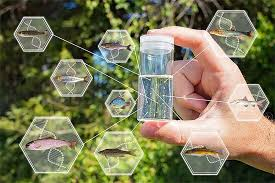Environmental DNA (eDNA) in the Air: A New Frontier in Biodiversity Monitoring
Environmental DNA (eDNA) has revolutionized biodiversity monitoring by allowing scientists to detect organisms without direct observation. Traditionally used in water and soil, eDNA methods have now expanded into the air — opening up a groundbreaking approach for tracking terrestrial biodiversity, especially elusive and endangered species.
Airborne eDNA refers to genetic material shed by organisms into the atmosphere via skin cells, hair, feathers, pollen, spores, and other biological particles. These tiny fragments of DNA float through the air and can be captured using air filters or collectors. Once gathered, the samples are processed using advanced molecular techniques such as polymerase chain reaction (PCR) and DNA sequencing to identify the species present in the environment.
This non-invasive monitoring technique offers several advantages. It enables the detection of a wide range of organisms including mammals, birds, insects, fungi, and plants, even those not directly observed in the area. For example, recent studies have shown the ability to detect the presence of rare animals like hedgehogs, bats, and birds of prey solely through air samples in natural reserves or zoo environments.
Airborne eDNA is especially promising for ecological surveillance in hard-to-reach regions like dense forests, caves, or mountainous terrain. It is also valuable in monitoring the spread of invasive species, seasonal migrations, and changes in ecosystem health. Furthermore, integrating air eDNA with weather data and GIS tools could create real-time biodiversity maps, revolutionizing conservation efforts.
However, the field is still developing, and challenges remain — such as DNA degradation by sunlight or humidity, contamination risks, and establishing the correlation between detected DNA and organism abundance or proximity. Standardizing sampling and analytical methods is crucial for broader application and reliability.
In conclusion, airborne eDNA is an emerging tool that holds vast potential to transform how we study and protect the natural world. As technology evolves, it could become a cornerstone of global biodiversity monitoring and environmental management strategies.
International Young Scientist AwardsWebsite link: youngscientistawards.com NominationLink:https://youngscientistawards.com/awardnomination/ecategory=Awards&rcategoryrdee Contact Us: support@youngscientistawards.com
___________________________________
Social Media:
Twitter : https://twitter.com/youngsc06963908
Linkedin- : https://www.linkedin.com/in/shravya-r...
Pinterest : https://in.pinterest.com/youngscienti...
Blog : https://youngscientistaward.blogspot....
Tumblr : https://www.tumblr.com/blog/shravya9




Comments
Post a Comment